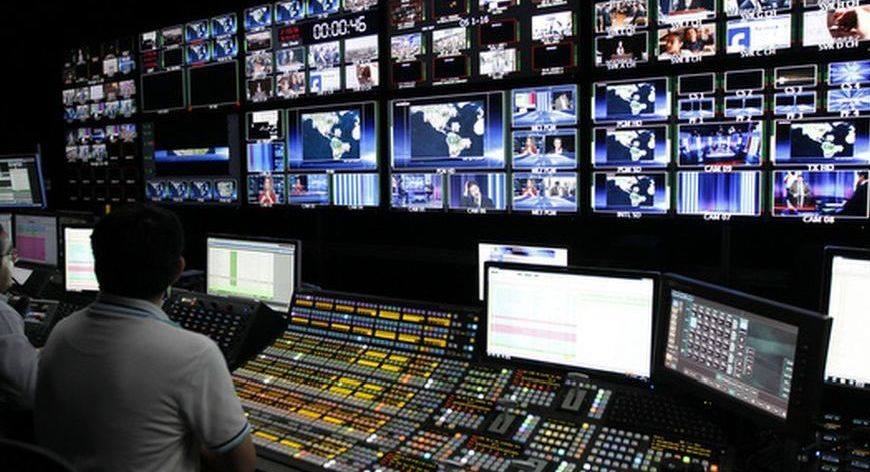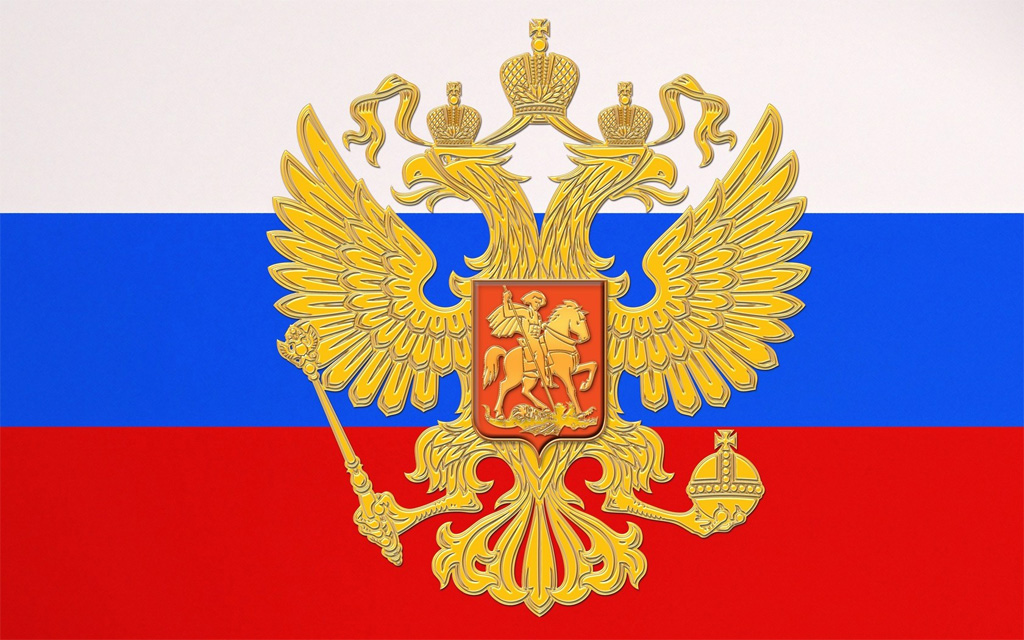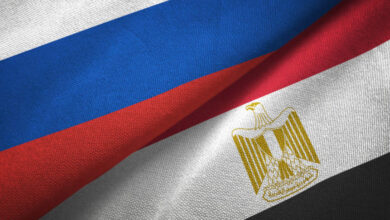Al-Arabiya Coverage of Qatar–Saudi Arabia Diplomatic Crisis: Framing the News Towards Reconciliation

Prepared by the researcher : Dr. Sidi Sidi Mohamed HAMDAN – Professor of English – Ibn Zohr University-Agadir /Morocco
Democratic Arab Center
Journal of Media Studies : Seventeen Issue – November 2021
A Periodical International Journal published by the “Democratic Arab Center” Germany – Berlin
:To download the pdf version of the research papers, please visit the following link
Abstract
The political context and international relations are significant factors in news framing. The tone of news coverage changes based on the level of connections and mutual relations between countries at times of peace and conflicts. This research investigates the impact of political context and diplomatic relations on media framing of news about Saudi Arabia and Qatar. Using framing as the essential concept in this research, a content analysis was designed to explore Al-Arabiya coverage of Qatar–Saudi Arabia Diplomatic Crisis. The findings suggest that the tone of coverage by Al Arabiya towards Qatar is impacted by the political context and the level of relationships between the two countries.
Introduction
Politics and news organizations have long been closely connected. (Schudson, 2002). Media have become an influential power in politics, changing the communication dynamics between world countries. Alternatively, the political context plays a significant role in influencing news coverage, whether at the level of selected news (amount of coverage) or the tone of coverage (Yarchi et al., 2017). As Saudi Arabia and Qatar have experienced a long period of unstable relationship, the tone of coverage by both countries’ media has been affected by the political circumstances and changed consistent with the level of the diplomatic relations between the two countries. A serious diplomatic crisis in the Middle East erupted on June 5, 2017, when Saudi Arabia, the United Arab Emirates (UAE), Bahrain and Egypt cut diplomatic ties and imposed a land, sea and air blockade on Qatar, accusing it of “supporting terrorism” and of having links with the jihadist networks of Daesh and Al-Qaeda, Flights to Doha have been suspended and the borders closed. Qatar, which was also due to host the 2022 World Cup, was asked to close the Al-Jazeera channel. Qatar rejected the allegations and the demands and in turn accused its neighboring countries of attacking its sovereignty and that the “blockade” imposed by its neighbors contravened fundamental rules of international law. With the escalation of the crisis, it was natural for the conflict to move to the media platforms of both countries and their allies. Thus, Saudi Arabia and Qatar entered into a fierce media war based on mutual accusations and defamation. This war was led by the two official television channels of the conflicting countries, Al-Jazeera (the Qatari government-sponsored news channel) and Al-Arabiya (the Saudi Arabian news channels). The media war was marked by strong-worded official statements between the officials of the two countries. This situation led to the exacerbation of the crisis and the collapse of the process of reconciliation between the two countries. The tension of the relationship was clearly reflected on the performance of the media through their desperate defense of their governments. However, with the easing of the crisis, the tone of the media changed and the escalation of the conflict decreased on the media front, which explains the relationship of the media and the extent to which it is linked and affected by the trends and policies of their governments. This research aims at exploring the effect of political context and diplomatic relations on media framing of news about Saudi Arabia and Qatar.
A Review of Framing Theory
Framing theory is one of the most significant theories in communication (Cacciatore et al, 2016). Bateson (1972) initially introduced the concept of framing in 1972. Psychological frames, he states, are a “spatial and temporary bounding of set of interactive messages” (p. 197) that function as a type of metacommunication (Hallahan, 2008). The term was developed by social psychologist Goffman (1974) to provide people with a context through which they can analyze and understand information so that they can identify and explain ideas. Framing serves as a “new paradigm” of communication and media studies (Entman, 1993, p. 51). Researchers use framing theory to better understand how media affects public and social perceptions. Frames are strong tools for defining and solving problems, as well as shaping public opinion (Knight, 1999). It is an important way through which media coverage shapes the attitudes. People build a particular conceptualization of an issue or refocus their thinking on an issue through the process of framing (Chong, & Druckman,2007). The theory of framing is founded on the idea that “the reaction to an event is determined not—or hardly at all—by the event itself but by the way in which such events are interpreted and given meaning” (De Vries, 2004). Framing indicates how the media may highlight some aspects of an issue and ignore others (Iyengar & McGrady, 2007). Both which events appear in the news and how they are presented are influenced by framing. The media, through picking and broadcasting news, directs public attention to certain causes, people, and problems while ignoring others. The media’s discussion of such issues, problems, and persons is referred to as the more nuanced level of framing. Frames increase the importance of specific elements of information regarding a problem by emphasizing them (Vladisavljević, 2015). In many ways, agenda setting theory and framing are intricately linked. Both theories investigate how the media draws the public’s attention to specific topics and thereby sets the agenda. Framing, on the other hand, goes a step further in that the way the news is delivered, establishes a frame for the information (Weaver, 2007). Framing analysis is needed in crisis communication. appropriate crisis communication is necessary when people or organizations are challenged by a foreseeable crisis. Framing analysis helps crisis communication managers to counteract damage by equipping them with necessary strategies to lessen the reputational damage (Hearit, 1994); Boyd, 2000). In this research, news framing seems to highlight selected facts, thus making those facts seem more significant than others. By framing their stories in these ways, media practitioners in Al-Arabiya channel tend to change the tone of news coverage according to the political context and the level of connections and mutual relations between Saudi Arabia and Qatar at times of peace and conflicts. Most of news stories are structured based on the position and views of the government towards its neighbor.
Methodology
This study draws on a content analysis of Al-Arabiya Coverage of Qatar–Saudi Arabia Diplomatic Crisis. Content analysis is defined as a systematic, replicable technique for reducing many words of text into fewer content sets constructed on obvious systems of coding (Berelson, 1952; GAO, 1996; Krippendorff, 1980; and Weber, 1990). Conventionally, content analysis has been employed as a descriptive instrument to recognize characteristics of messages (Iyengar & Simon, 2000) intended for broad audiences (Neuendorf 2002: 22). The content analysis was conducted using a coding system to identify word frequencies that are pertinent to the tone of coverage toward Qatar by Al Arabiya. The main objective was to identify whether the tone was presented in a positive, neutral or negative way, as well as to pinpoint the frames. Discourse analysis is also considered here to support this research. Fairclough (1992) argues that continuous repeating of some specific words is sign of ideology. In this research, the content analysis is conducted to identify the amount of speculative language in news headlines along with their pertinent articles in the sense that headlines serve as the core of the news article and used by headline writers to grab the attention of readers (Kiousis & McCombs, 2004; Scheufele, 2000). The research focuses on specific events in the course of the crisis, in particular the periods of time preceding and following Al-Ula Summit in Saudi Arabia. The incident was selected as it was one of the momentous and decisive events in Qatar–Saudi Arabia relations, where leaders of the Gulf Cooperation Council (GCC) and Egypt signed a joint declaration and announced restoration of dies with Qatar after years of severed political and economic relations. A total of 31 headlines as well as their related articles were accessed during the period starting from Friday, 30 October 2020 to Sunday, 10 January 2021, thanks to the possibility offered by the website to offer easy access to its content archived by year, month and day. The database provided by english.alarabiya.net through its accessible news archives was searchable using keyword on the headlines and/or the full text. A search using the main keyword “Qatar” limited by data published during the aforementioned period of searching produced the following headline and their articles (n=31):
Table 1. Al Arabiya news articles about Qatar (accessed Friday, 30 October 2020 to Sunday, 10 January 2021)
|
Headlines of Retrieved Articles |
Date of
publication |
*TC (P/N/B) |
| Elated Qataris stream into their ‘second country,’ Saudi Arabia, after borders reopen | 10 Jan, 2021 | p |
| Qatar and Saudi Arabia to resume direct flights from Jan. 11 | 10 Jan, 2021 | p |
| First Qatari vehicle enters Saudi Arabia after reopening of Salwa border | 09 Jan, 2021 | p |
| Concussion substitutions to be trialed at FIFA’s Club World Cup in Qatar | 08 Jan, 2021 | B |
| Coronavirus: Saudi Arabia opens health center at Qatar border, sets entry conditions | 08 Jan, 2021 | P |
| UAE announces reopening of all land, sea, air borders with Qatar | 08 Jan, 2021 | P |
| Qatar Airways restarts a number of flights through Saudi Arabia’s airspace | 07 Jan, 2021 | P |
| UAE says transport to, trade with Qatar may resume within a week | 07 Jan, 2021 | P |
| Qatar economy to grow 3 pct in 2021 on resolution of Gulf dispute: Standard Chartered | 06 Jan, 2021 | P |
| Reconciliation with Qatar | 06 Jan, 2021 | P |
| Qatar welcomes AlUla declaration amid GCC summit: SPA | 06 Jan, 2021 | P |
| Saudi Arabia’s FM: AlUla declaration ends dispute with Qatar, restores all ties | 05 Jan, 2021 | P |
| GCC Summit: Saudi Arabia’s Crown Prince meets Qatar’s Emir, reviews bilateral ties | 05 Jan, 2021 | P |
| Qataris celebrate Saudi Arabia borders reopening after three-year closure | 05 Jan, 2021 | P |
| Saudi Arabia-Qatar relations: Timeline of significant events in the Gulf crisis | 05 Jan, 2021 | B |
| Watch: Qataris celebrate Saudi Arabia borders reopening after three-year closure | 05 Jan, 2021 | P |
| Qatari stocks experience sharp rise as Gulf tensions ease, Dubai extends | 05 Jan, 2021 | P |
| GCC Summit: Saudi Arabia’s Crown Prince welcomes Qatari Emir to AlUla with a hug | 05 Jan, 2021 | |
| GCC Secretary-General says Saudi-Qatari borders reopening reflects ‘deep-rooted’ ties | 05 Jan, 2021 | P |
| Qatar’s Emir confirms attendance at GCC Summit in Saudi Arabia’s AlUla | 04 Jan, 2021 | P |
| Saudi Arabia reopens airspace, borders to Qatar: Kuwait minister | 04 Jan, 2021 | P |
| GCC Secretary General delivers formal invite to Qatar to attend summit | 30 Dec, 2020 | P |
| Bahrain: Qatar’s claim of 4 Bahraini fighters violating its airspace is baseless | 25 Dec, 2020 | N |
| UAE’s Gargash: Qatar’s media is undermining Gulf crisis progress | 22 Dec, 2020 | N |
| New lawsuit filed in New York accuses top Qatar banks of funding terror in Israel | 16 Dec, 2020 | N |
| Qatari Coast Guard’s conduct abuse, totally unacceptable: Bahrain Interior Minister | 14 Dec, 2020 | N |
| Qatar expects $9.5 bln deficit next year on lower revenues, low energy prices | 11 Dec, 2020 | N |
| Trump adviser Kushner and US team heading to Saudi Arabia and Qatar for talks | 30 Nov, 2020 | B |
| Qatar says identified mother of dumped baby, after female invasive exams scandal | 23 Nov, 2020 | N |
| Qatar’s Al Jazeera, France’s Macron receive backlash after televised interview | 01 Nov, 2020 | N |
| Qatar says airport officials behind invasive exams of women referred to prosecutors | 30 Oct, 2020 | N |
| New Zealand slams Qatar as Kiwi woman revealed as victim of forced airport exams | 30 Oct, 2020 | N |
* TC (Tone of Coverage) (P=positive / N=negative /B=balanced)
Results
On the whole, in the time of Qatar–Saudi Arabia Diplomatic Crisis, Al-Arabiya Coverage presented a varying tone about the event ranging from negative to positive and balanced (natural) in very few cases. In the first period just few days before the opening of the 41st Gulf Cooperation Council (GCC) summit held in Saudi Arabia (pre-summit period), the largest percentage of articles, 90% (n = 10), were negative. Next in frequency, 10 % (n = 10) of the articles were identified as neural. On the other hand, in the second period (post-summit period), 95.2 % (n = 21) were positive and 4.7% (n=21) were neutral. The results indicated that political context is a significant element in formulating news coverage and framing news towards a particular issue in the interest of stakeholders. Some studies supposedly indicated that Al Arabiya -along with Al Jazeera- news channel adopted uncompromising view in support of its proprietors during the first weeks and months of the 2017 Gulf crisis (Ajaoud & Elmasry,2020). Mellor et al. (2011) stated that most of Arab channels including Al Arabiya and Al Jazeera are directly connected to their state benefactors. In this view then, the findings of this research indicated that Al-Arabiya coverage of Qatar–Saudi Arabia diplomatic crisis adopted almost a negative tone towards Qatar all through the period before the 41st Gulf Cooperation Council summit took place. However, the channel seemed to adopt a new friendly and quiet tone in its coverage of Qatar affairs immediately few days as the opening of the summit approached. In this regard, on its coverage of Qatar’s economy, Al Arabiya reported in an article published on December 11, 2020 that Qatar would suffer from deficit on lower revenues, low energy prices in the coming years (Al Arabiya English, 2020). Later, a few days following the closing of the summit, another article reported noticeable growth in the Qatar’s economy with 3% as a result of the ease of the dispute (Al Arabiya English, 2021a). This fact and many similar ones (see table1) demonstrate a softening in the negative tone of Al Arabiya coverage of Qatar’s affairs as the summit became closer where the positive news coverage outweighed the negative reporting to a significant extent that it could contribute to an impression of confidence about pushing forwards reconciliation. All things considered, for the full three months before the opening of the summit, Qatar received more negative stories than positive ones. The coverage had covered a number of issues including political, economic and social stories. However, the coverage which seemed neutral covered very few stories including a story about Kushner and US team heading to Saudi Arabia and Qatar for talks where no detailed description of event was included in the article (Al Arabiya English, 2021b). The major themes that enjoyed more positive than negative coverage emerged immediately a few days before the opening session of the 41st GCC summit in the Saudi city of al-Ula. The post summit period marked a noticeable change in the tone of coverage towards Qatar.
Table 2. The share of negative, balanced (neutral) and positive tone in the headlines and articles analyzed
| Positive | Negative | Balanced | |
| Pre-summit period | 0 | 9 | 1 |
| Post-summit period | 20 | 0 | 1 |
| Toll =31 | 20 | 9 | 2 |
Bearing everything in mind, it can be concluded that Al-Arabiya coverage of Qatar to some extent may reflect the political position of Saudi Arabia towards Qatar. This proves the idea that the political conditions to have an impact on the way the media covers issues. The findings indicate that that journalists’ coverage of a certain issue is often framed in accordance with the policy of its owners.
Conclusion
Despite the positive effects and uses of the media in ordinary situations, it has become a strong extension of political conflicts between countries. This research shows how media discourse may be affected by the change of political contexts and the variations of relations between countries. In this research, Al-Arabiya Coverage of Qatar–Saudi Arabia diplomatic crisis has been impacted by the Saudi Arabia ’s position towards Qatar both in times of the political crisis and periods of stability of diplomatic relations. This case represents the role played by Media in general and the Arab Media in particular which serve as the voice of its owners and often respond to their interest. This research advocates the prevailing views about the great impact of the political context on the framing of news and the tone of coverage.
Bibliography
Ajaoud, S., & Elmasry, M. H. (2020). When news is the crisis: Al Jazeera and Al Arabiya framing of the 2017 Gulf conflict. Global Media and Communication, 16(2), 227-242.
Al Arabiya English. (2020, December 11). Qatar expects $9.5 bln deficit next year on lower revenues, low energy prices. Al Arabiya English. Retrieved January 10, 2021, from https://english.alarabiya.net/business/economy/2020/12/11/Economy-Qatar-expects-9-5-bln-deficit-next-year-on-lower-revenues-low-energy-prices.
Al Arabiya English. (2021a, January 6). Qatar economy to grow 3 PCT in 2021 on Resolution of Gulf Dispute: Standard Chartered. Al Arabiya English. Retrieved November 15, 2021, from https://english.alarabiya.net/en/business/economy/2021/01/06/Qatar-economy-to-grow-3-pct-in-2021-on-resolution-of-Gulf-dispute-Standard-Chartered.
Al Arabiya English. (2021b, January 6). Qatar economy to grow 3 PCT in 2021 on Resolution of Gulf Dispute: Standard Chartered. Al Arabiya English. Retrieved November 15, 2021, from https://english.alarabiya.net/en/business/economy/2021/01/06/Qatar-economy-to-grow-3-pct-in-2021-on-resolution-of-Gulf-dispute-Standard-Chartered.
Bateson, G. (1972). Steps to an ecology of mind: Collected essays in anthropology, psychology, evolution and epistemology. San Francisco, CA: Chandler
Berelson, B. (1952). Content Analysis in Communication Research. Glencoe, Ill: Free Press.
Boyd, J. (2000). Actional legitimation: No crisis necessary. Journal of Public Relations Research, 12, 341–353.
Cacciatore, M. A., Scheufele, D. A., & Iyengar, S. (2016). The end of framing as we know it… and the future of media effects. Mass Communication and Society, 19(1), 7-23.
Chong, D., & Druckman, J. N. (2007). Framing theory. Annu. Rev. Polit. Sci., 10, 103-126.
De Vries, M. S. (2004). Framing crises: response patterns to explosions in fireworks factories. Administration & Society, 36(5), 594-614.
Entman, R. M. (1993). Framing: Towards Clarification of a Fractured Paradigm. Journal of Communication, 43(4), 51-58
Fairclough, N. (1992). Discourse and text: Linguistic and intertextual analysis within discourse analysis. Discourse & society, 3(2), 193-217.
Goffman, E. (1974). Frame Analysis: An Essay on the Organization of Experience. New York, NY: Harper & Row.
Hallahan, K. (2008). Strategic Framing. International Encyclopedia of Communication, Blackwell.
Hearit, K. M. (1994). Apologies and public relations crises at Chraysler, Tohilba and Volvo. Public Relations Review, 20, 113–125.
Iyengar, S., & McGrady, J. (2007). Media politics: A citizen’s guide. New York: WW Norton.
Iyengar, S., & Simon, A. F. (2000). New perspectives and evidence on political communication and campaign effects. Annual review of psychology, 51(1), 149-169.
Kiousis, S., & McCombs, M. (2004). Agenda-setting effects and attitude strength: Political figures during the 1996 presidential election. Communication Research, 31(1), 36-57.
Knight, M. G. (1999). Getting past the impasse: Framing as a tool for public relations. Public Relations Review, 17, 27–36.
Krippendorff, K. (1980). Content Analysis: An Introduction to Its Methodology. Newbury Park, CA: Sage.
Mellor, N., Rinnawi, K., Dajani, N., & Ayish, M. I. (2011). Arab media: Globalization and emerging media industries (Vol. 1). Polity.
Neuendorf, K. A. (2002). Defining content analysis. Content analysis guidebook. Thousand Oaks, CA: Sage.
Schudson, M. (2002). The news media as political institutions. Annual review of political science, 5(1), 249-269.
Vladisavljević, N. (2015). Media framing of political conflict: A review of the literature.
Weaver, D. H. (2007). Thoughts on agenda setting, framing, and priming. Journal of communication, 57(1), 142-147.
Weber, R. P. (1990). Basic Content Analysis, 2nd ed. Newbury Park, CA
Yarchi, M., Samuel-Azran, T., Galily, Y., & Tamir, I. (2017). The impact of political context on News coverage: Covering Qatar in the Israeli press. Media, War & Conflict, 12(1), 19-29. doi:10.1177/1750635217711202




